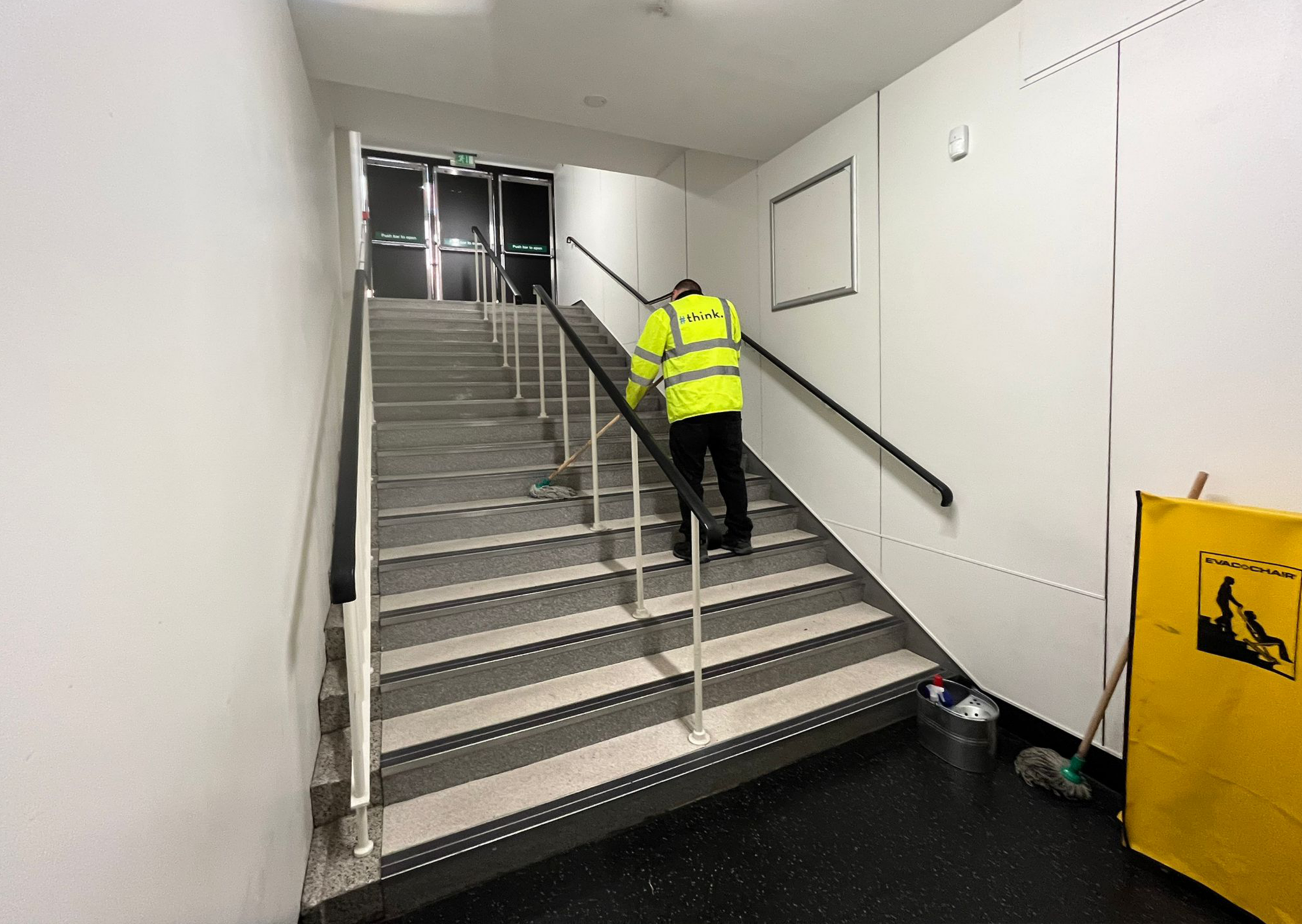Builder clean: 105 Duke Street
Introduction:
This case study presents a comprehensive overview of a builder clean carried out in Liverpool on a listed building. The project aimed to restore and enhance the aesthetic appeal of the historic property, while ensuring that the cleaning process adhered to the strict guidelines governing listed buildings. Here we give details the challenges faced, the methods employed, and the successful outcome of the builder clean.
Challenges faced:
Historical Preservation:
105 Duke Street, a re-adapted listed building, now serves as a modern office space boasting unique designs. The blend of old and new elements is evident throughout the building, with old walls, pillars, and architectural features seamlessly integrated with fresh, contemporary designs. Cleaning such a building presents unique challenges that must be approached with care and attention to detail. Retaining the original materials, preserving delicate surfaces, and safeguarding intricate details are of utmost importance. Gentle cleaning methods are essential to prevent any damage to the building’s historical significance and architectural integrity.
Safety and Compliance:
Thinkcleanworx Operatives underwent site induction with the client, ensuring that all necessary protocols and procedures were communicated. In addition, our operatives diligently signed in and out of the building, maintaining a thorough record of their presence. We prioritised safety by having first aid operatives always present on site. Furthermore, our operatives received comprehensive training in various areas, including COSSH, manual handling, lone working, slips, trips, and falls, machinery hazards, fire safety, and possession of a CSCS card.
Cleaning Methods:
Assessment and Planning:
During our site survey and meetings with the site manager and building designer, we discovered that many of the floors in the building are original from the 1800s. Therefore, it was crucial for us to understand the materials, surfaces, and historical context in order to determine the most suitable cleaning methods. We decided to use plant-based noncorrosive chemicals, which are world-class anti-microbials. These chemicals have undergone extensive efficacy testing and are safe for both users and the environment.
Specialised Cleaning Techniques:
This building at 105 Duke Street was built around 1800 by John Foster (senior). It was originally known as the Union Newsroom. From 1852-60 it was Liverpool’s first public library. It also housed the natural history collections given to the town by the Early of Derby.
On site, we encountered a significant challenge regarding the cleaning and dusting of high- level windows in the original atrium, reaching heights of up to 12 meters. To address this, we utilised a Mi Tower along with a Space high-reach vacuum, specifically designed for high- level commercial cleaning and maintenance. With this equipment, we successfully eliminated all the dust, impressing the client with the exceptional results. Additionally, the Mi Tower proved to be a safe, versatile, and high-quality access tower, purposefully designed to address common site issues. Consequently, we were able to achieve a high standard of cleanliness for each window.
We ensured utmost respect and care in cleaning the flooring, considering its originality from the 1800s. To accomplish this, we utilised a plant-based cleaning solution with an Imop and scrubber dryer.
Execution and Results:
We successfully completed the project on time and within budget, exceeding the client’s expectations. As a result, we have been recommended for further work with them.
Implementation:
The builder clean was executed with precision and efficiency. The timeline was carefully planned, ensuring that all tasks were completed in a timely manner. The team involved consisted of experienced professionals who worked collaboratively to achieve the desired outcome. Close collaboration and communication were paramount throughout the process, as it ensured that any issues or challenges were addressed promptly. The coordination with other tradespeople was seamless, with regular updates and clear communication channels established. This close collaboration and communication played a crucial role in the successful outcome of the builder clean.
Achievements and Benefits:
The builder clean has resulted in several positive outcomes for the building. Firstly, it has successfully restored and revived the building’s original charm, bringing back its historical significance and aesthetic appeal. Additionally, the clean has greatly improved the air quality within the building, creating a healthier and more comfortable environment for its occupants. Lastly, the project has contributed to the preservation of Liverpool’s architectural heritage by ensuring the longevity of the building, safeguarding its historical value for future generations to appreciate.
Conclusion:
The case study highlights the significance of specialised cleaning techniques for listed buildings. The builder cleans in Liverpool successfully restored the property’s aesthetic appeal while adhering to strict guidelines. This restoration ensures the long-term sustainability of the building for future occupants.



